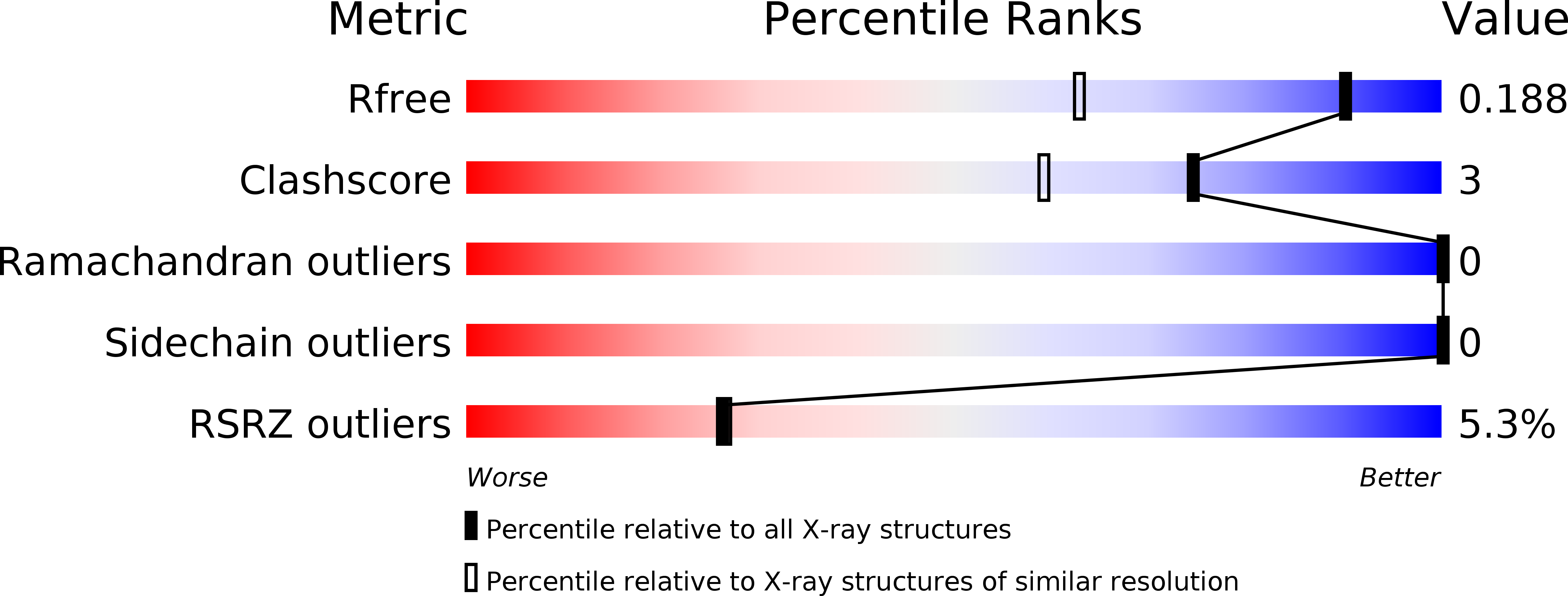Structural analysis of a glycoside hydrolase family 11 xylanase from Neocallimastix patriciarum: insights into the molecular basis of a thermophilic enzyme.
Cheng, Y.S., Chen, C.C., Huang, C.H., Ko, T.P., Luo, W., Huang, J.W., Liu, J.R., Guo, R.T.(2014) J Biol Chem 289: 11020-11028
- PubMed: 24619408
- DOI: https://doi.org/10.1074/jbc.M114.550905
- Primary Citation of Related Structures:
3WP4, 3WP5, 3WP6 - PubMed Abstract:
The catalytic domain of XynCDBFV, a glycoside hydrolase family 11 (GH11) xylanase from ruminal fungus Neocallimastix patriciarum previously engineered to exhibit higher specific activity and broader pH adaptability, holds great potential in commercial applications. Here, the crystal structures of XynCDBFV and its complex with substrate were determined to 1.27-1.43 Å resolution. These structures revealed a typical GH11 β-jelly-roll fold and detailed interaction networks between the enzyme and ligands. Notably, an extended N-terminal region (NTR) consisting of 11 amino acids was identified in the XynCDBFV structure, which is found unique among GH11 xylanases. The NTR is attached to the catalytic core by hydrogen bonds and stacking forces along with a disulfide bond between Cys-4 and Cys-172. Interestingly, the NTR deletion mutant retained 61.5% and 19.5% enzymatic activity at 55 °C and 75 °C, respectively, compared with the wild-type enzyme, whereas the C4A/C172A mutant showed 86.8% and 23.3% activity. These results suggest that NTR plays a role in XynCDBFV thermostability, and the Cys-4/Cys-172 disulfide bond is critical to the NTR-mediated interactions. Furthermore, we also demonstrated that Pichia pastoris produces XynCDBFV with higher catalytic activity at higher temperature than Escherichia coli, in which incorrect NTR folding and inefficient disulfide bond formation might have occurred. In conclusion, these structural and functional analyses of the industrially favored XynCDBFV provide a molecular basis of NTR contribution to its thermostability.
Organizational Affiliation:
Genozyme biotechnology Inc., Taipei 106, Taiwan,; AsiaPac Biotechnology Co., Ltd., Dongguan, 523808, China.


















